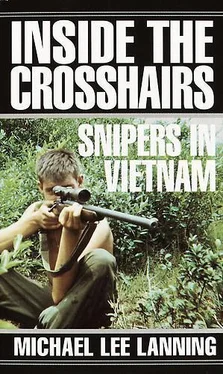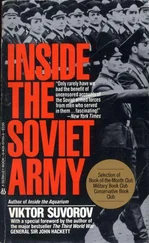Although bowmen contributed to the outcomes of battles, most soldiers disdained them, believing the archers to be cowardly fellows who skulked on the outer edges of battlefields in relative safety waiting for the opportunity to launch arrows against better, braver men.
As populations multiplied and nations formed around political and religious leaders, warfare increased in frequency and scale. Yet, for the time bow and arrow marksmanship remained secondary to the sword and spear, which ruled the battlefield. When those standard weapons were not enough to guarantee success, adaptations appeared. Macedonian Alexander the Great conquered much of the known world between 336 and 323 B.C. with an army built around infantrymen armed with fourteen-foot-long pikes, twice the length of his enemies’ spears.
Julius Caesar, expanding the Roman Empire between 59 and 44 B.C., wrote in his third-person account of the battle that defeated the Gauls titled The Gallic War , “The situation was critical and as no reserves were available, Caesar seized a shield from a soldier in the rear and made his way to the front line. He addressed each centurion by name and shouted encouragement to the rest of the troops, ordering them to push forward and open out their ranks so they could use their swords more easily. His coming gave them fresh heart and hope. Each man wanted to do his best under the eyes of his commander despite the peril.”
But the spear and sword tactics would encounter changes that would alter the face of warfare. Legions of Rome lost a relatively insignificant battle at Carrhae in 53 B.C. that provided a preview of the future. Parthian (Iranian) cavalry armed with bows attacked Roman infantry under the command of Consul Crassus. The 10,000 Parthian cavalry, supported by 1,000 camels that carried nothing but extra arrows to resupply the mounted bowmen, annihilated the equal-size Roman force.
The horse-mounted bowman would soon rule the battlefield, but only after another innovation. Because an early cavalryman riding bareback or on a padded blanket had only his horse’s mane to hold on to, shooting arrows accurately and reloading quickly proved to be extremely difficult. The invention of the saddle with stirrups, probably in India during the first century B.C., provided cavalrymen a stable platform from which to fight, making it one of the most significant military developments in five hundred years.
In the fifth century A.D. the first army composed almost entirely of horse-mounted archers conquered much of southern Europe and challenged the might of the Roman Empire. Attila the Hun, known as the Scourge of God to his enemies, assembled an army of 100,000 soldiers. Each Hun soldier rode into battle mounted on horseback and armed with a bow and multiple quivers of arrows. He led from one to seven additional horses that carried additional arrows, water, and all the supplies need for an extended campaign.
Hun bowmen could accurately shoot arrows up to 100 meters at individual targets and double that distance by firing at a high angle. Swords, axes, and maces rounded out the Huns’ arsenal for close-in fighting, but the bow became their most influential weapon on the battlefield; the proficiency of individual bowmen had finally gained status. Some accounts suggest there were Huns who could shoot down a bird in flight or pierce an enemy’s eye at 100 meters.
For killing at a distance, the range of the weapon and the personal proficiency of the warrior had become the most important characteristics for successful engagement. Those traits only increased in significance with the next major advance, which had the greatest impact on warfare to date.
No records document the exact development date of the crossbow, but the Chinese historical work titled Shih chi , composed about 100 B.C., mentions the use of the weapon in the battle of Maling, China, in 341 B.C. The Chinese document also notes that the weapon had uses beyond the battlefield. According to the Shih chi , Chinese emperor Ch’in Shih, who died in 210 B.C., gave instructions for preparations of his tomb and “commanded the artisans to make automatic crossbows and arrows so that if anyone dug in and entered they would suddenly shoot and slay them.”
The crossbow first appeared in Europe with the Roman army in the first century A.D. F. Vegetius Renatus notes in his writings of A.D. 386, De Re Militari , that crossbowmen were a regular part of the Roman army. The fact that the author does not go into detail probably indicates that the weapon had been present for some time. Art of the period in France and Rome shows soldiers armed with crossbows.
With the fall of the Romans in the fifth century A.D., the crossbow mostly disappeared from Europe for 500 years. Because Rome’s enemies did not adopt the crossbow, the bow, sword, and pike remained the primary weapons.
The crossbow did not reappear on the Continent until improvements in its bow, arming mechanism, and projectiles again brought it to the forefront as Europeans prepared to embark on Crusades to “liberate” the Holy Land. Composition materials had made the bow stronger and levers allowed the operator to more easily pull the draw string to the trigger. These modifications increased the weapon’s range to 150 meters. Wooden shafts with iron tips, known as bolts, replaced the traditional arrows and could penetrate armor and chain mail.
Crossbowmen carried hundreds of bolts and copied the archers’ technique of firing in volley. However, marksmen who proved their accuracy with the weapon sought and engaged individual targets. These early marksmen were often successful in bringing down enemy leaders. English King Richard the Lionhearted, after gaining success and fame in the Crusades, returned home to engage enemies in Europe. In 1199, a crossbowman in the army of the Bishop of Limoges fired a bolt into Richard’s shoulder during a minor skirmish. Gangrene set in, and the single, well-aimed crossbow bolt resulted in the death of the English king.
In 1453 another crossbowman turned the tide of an entire battle with a single bolt. An unidentified soldier in the Ottoman army of Mohammed II, the Conqueror, fired a bolt that seriously wounded John Giustiniani, the leader of the defenders of Constantinople. With Giustiniani no longer able to rally his men, the Ottomans quickly overran the defenses and captured the city.
The effectiveness of the crossbow greatly increased the lethality of the battlefield and the opportunities for individual marksmen. Used by infantry and cavalry alike, the crossbow soon earned the reputation as warfare’s first “ultimate weapon,” and some even wondered if it would make combat so deadly that it might end war altogether. Such conjecture, of course, proved invalid, but the crossbow did provoke history’s first recorded example of arms control. A Vatican edict in 1139 outlawed the use of the crossbow in warfare between Christians. Its use, however, against Moslems and other “infidels” remained within reasonable limits.
Despite its advantages over standard bows and arrows of range, power, and accuracy, the crossbow was far from being the perfect weapon. Its weight of up to sixteen pounds was cumbersome, and the levered draw string made it difficult to reload. Challenging the crossbow in range and power by the late thirteenth century was the longbow, introduced by English King Edward I. Archers with these 100-to-150-pound-pull, six-foot bows could nearly match the range of crossbows but could reload and fire six times as fast. In the Battle of Crécy in 1346, English longbowmen achieved a decisive victory over the Genoese, the elite of European crossbowmen. Even though the crossbow remained an integral part of armies across Europe and Asia, it more and more became a defensive device used to protect the parapets of fortresses during siege warfare rather than to support mobile operations.
Читать дальше












